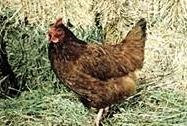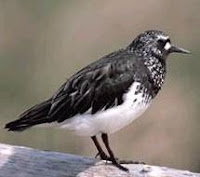..
 Robin
Robin
Both European and American robins typically live close to human dwellings. The American robin eats mainly fruit, although it occasionally eats insects.
 Snowy Owl
Snowy Owl
The snowy owl ranges across northern Eurasia and North America. During the winter months, the snowy owl’s white plumage camouflages it, allowing it to swoop down undetected on small mammals and fish.
 Surf Scoter
Surf Scoter
The surf scoter, Melanitta perspicillata, is a migratory duck that spends its summers in Arctic tundra and muskeg regions of Canada and Alaska and its winters from southern California and the Gulf of California eastward to Florida. Surf scoters feed on insects, larvae, and pondweed.
 Tropical Parrots
Tropical Parrots
Florida’s warm, humid climate allows it to sustain exotic tropical wildlife like these parrots, originally from South America.
 Vegetarian Finch
Vegetarian Finch
On visiting the Galápagos Islands in 1835, British naturalist Charles Darwin noted the diversity of life, with each island supporting its own form of tortoise, mockingbird, and finch, such as the vegetarian finch shown here. Darwin suspected that geographic isolation had caused a single species to gradually evolve into a number of diverse species. This theory of evolution by natural selection, as explained in his 1859 work On the Origin of Species, revolutionized understanding of the natural world.
 Western Grebe
Western Grebe
The graceful western grebe, Aechmophorus occidentalis, is well suited for life in water but cannot walk on dry land. The bird uses a variety of elaborate dances during courtship. The mating pair, shown here, race side-by-side across the water with their heads erect and their bodies pushed up out of the water.
 White-Tailed Kite
White-Tailed Kite
The white-tailed kite, Elanus leucurus, lives in open country in the western United States south through Mexico into parts of Chile and Argentina. Like many members of the hawk family it hunts by soaring over open areas looking for field mice and other small mammals. Populations of this graceful long-winged kite are making a comeback after being hunted almost to extinction early in the 20th century.
 Wood Duck
Wood Duck
The wood duck, Aix sponsa, lives in a variety of freshwater habitats in Canada, the United States, and Mexico. It often swims in shallow water, foraging for the seeds of aquatic plants. Like other ducks, the wood duck has webbed toes that function as paddles.
 Robin
RobinBoth European and American robins typically live close to human dwellings. The American robin eats mainly fruit, although it occasionally eats insects.
 Snowy Owl
Snowy OwlThe snowy owl ranges across northern Eurasia and North America. During the winter months, the snowy owl’s white plumage camouflages it, allowing it to swoop down undetected on small mammals and fish.
 Surf Scoter
Surf ScoterThe surf scoter, Melanitta perspicillata, is a migratory duck that spends its summers in Arctic tundra and muskeg regions of Canada and Alaska and its winters from southern California and the Gulf of California eastward to Florida. Surf scoters feed on insects, larvae, and pondweed.
 Tropical Parrots
Tropical ParrotsFlorida’s warm, humid climate allows it to sustain exotic tropical wildlife like these parrots, originally from South America.
 Vegetarian Finch
Vegetarian FinchOn visiting the Galápagos Islands in 1835, British naturalist Charles Darwin noted the diversity of life, with each island supporting its own form of tortoise, mockingbird, and finch, such as the vegetarian finch shown here. Darwin suspected that geographic isolation had caused a single species to gradually evolve into a number of diverse species. This theory of evolution by natural selection, as explained in his 1859 work On the Origin of Species, revolutionized understanding of the natural world.
 Western Grebe
Western GrebeThe graceful western grebe, Aechmophorus occidentalis, is well suited for life in water but cannot walk on dry land. The bird uses a variety of elaborate dances during courtship. The mating pair, shown here, race side-by-side across the water with their heads erect and their bodies pushed up out of the water.
 White-Tailed Kite
White-Tailed KiteThe white-tailed kite, Elanus leucurus, lives in open country in the western United States south through Mexico into parts of Chile and Argentina. Like many members of the hawk family it hunts by soaring over open areas looking for field mice and other small mammals. Populations of this graceful long-winged kite are making a comeback after being hunted almost to extinction early in the 20th century.
 Wood Duck
Wood DuckThe wood duck, Aix sponsa, lives in a variety of freshwater habitats in Canada, the United States, and Mexico. It often swims in shallow water, foraging for the seeds of aquatic plants. Like other ducks, the wood duck has webbed toes that function as paddles.






























